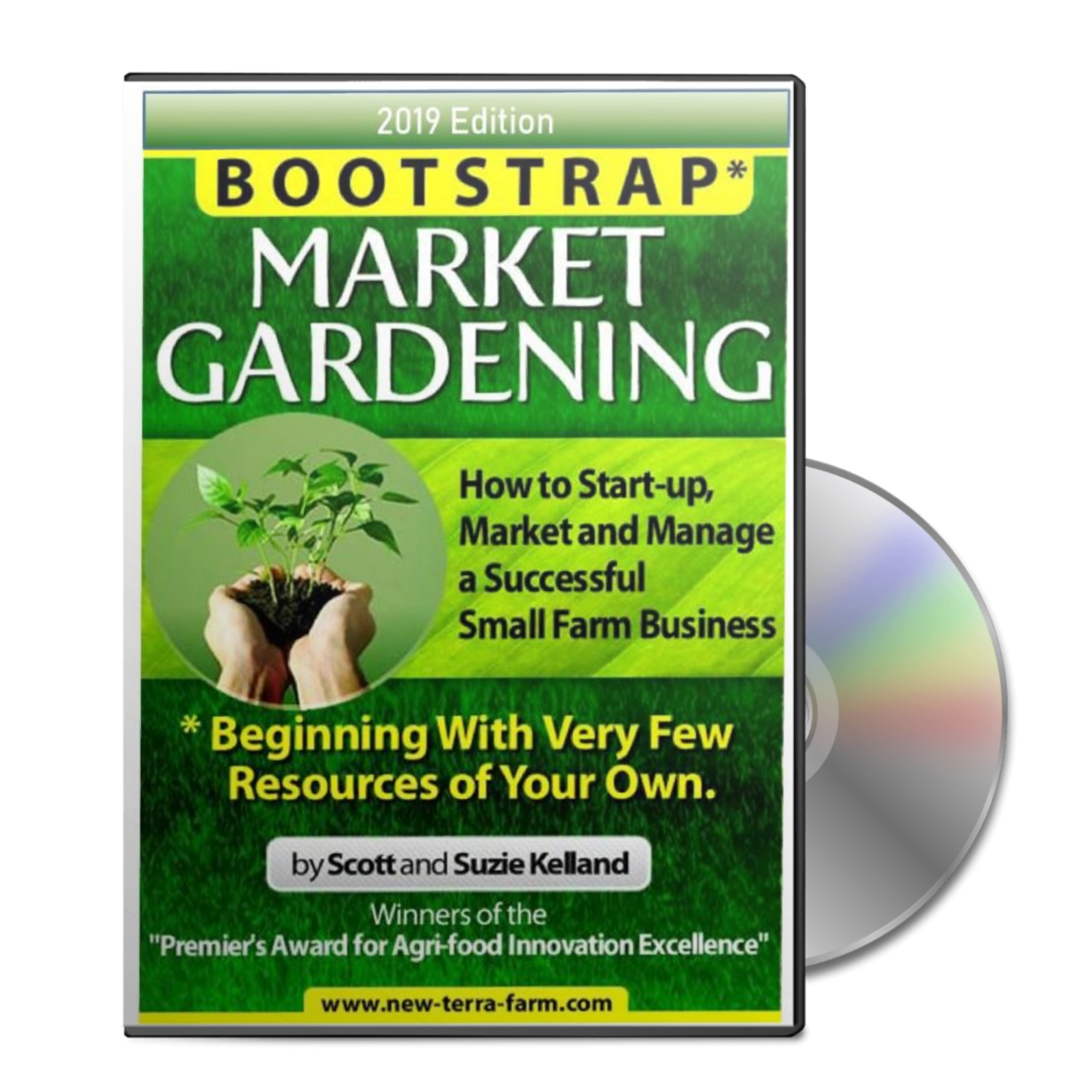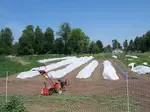Is a Multi-Farm CSA the Future for Small Farms?
Long time readers of my golden prose know that the New Terra Farm market garden is based on
Community Supported Agriculture (CSA) principles. Before I discuss the reasons for small market growers to consider creating a multi-farm CSA, let me explain what a plain old CSA is.
CSA is a marketing model wherein customers pay growers in advance of the growing season for a guaranteed share of the season’s harvest.
The advantages of this model are many; people and communities connect back to the source of their food by supporting a local grower, and get great fresh food in return.
Kids learn where food really comes from. The farmer knows how many people have joined her CSA, and therefore can
plan production more closely. And the advance payment to the farmer helps to finance the start-up costs of the farm operation.
This last is an important point. Garden work and therefore costs begin long before the farmer delivers the first box of veggies. At New Terra Farm our gardening year starts in January, when we order seed and supplies, and send out our first marketing flyers.
We start the first seeds in February. We begin planting outdoors in April, and our first deliveries start in June. You can see this clearly in my
Growing for Market Get Started Checklist
So by the time we actually harvest crops, we have been working (and spending) for 5 or 6 months. Seed, trays and pots, seed starting mix, tillage, heat, electricity, soil amendments and organic fertilizers, row cover, irrigation equipment, fuel, labour costs, etc etc etc. This adds up quickly; we may spend 50% or even more of the budget for the the year before harvest even begins.
So the CSA model is a good one for communities, consumers and farmers. But there are challenges. The first big challenge for the farmer is learning to manage a complex poly-culture of perhaps 30 to 50 crops, so as to ensure a weekly delivery of fresh produce over perhaps a 20-week season. This is a serious management challenge.
The second challenge is the unpredictability of the season. While the farmer can plan for generous delivery quantities, and build in a 'safety factor' by over planting, and manage her garden diligently, at the end of the day it all comes down to the weather. This was brought home to us this season in a major way.
In 2010 on July 21 our farm was hit by a major hailstorm, which pretty much wiped out the garden. This was despite taking all our usual protective measures. The winds were so strong and the hail so severe that it blew away row cover and destroyed the plants underneath.
Hail punched holes in our greenhouse, and even put holes in the vinyl siding on my house. One poor Black Australorp hen was caught too far from cover and was killed by the hail.
This was a completely unforeseen event; I've lived on both coasts and a couple other provinces and I've never seen a storm come up that fast and that violently. We were left with very little to deliver to our customers, and because of the 'front-loading' of expenses as described above, little chance to compensate them.
This was a frustrating and depressing experience; months of work were wiped out in about 15 minutes. The long-term impact is also serious; I know many first-year customers were upset and did not return. The only bright spot in the whole experience is that our long-term customers were very understanding and supportive. This was a great comfort in a trying time.
Which brings me back to the main topic, creating a multi-farm CSA. A multi-farm CSA unites several growers to feed a common community. The benefits of this approach are many. It provides the advantages of a traditional CSA along with the advantages of partnering with other farms or
growers.
The burden and the risks of growing dozens of crops are shared among the growers. Growers can specialize to some extent. There is the opportunity for growers to learn from each other. And new growers have an opportunity to 'try their hand' without committing to supporting a full CSA on their own.
The multi-farm CSA also provides protection to customers. Since more than one farm will grow most crops, the loss of production from a single farm can be made up by others.
The multi-farm CSA can also be organized as a true cooperative. In this model, the cooperative manages the funds (CSA fees from customers) and uses that money to buy produce from the cooperative member farmers.
The farmer still benefit from a guaranteed market, and can even receive some advance payment to cover start-up costs. The cooperative has the option to buy from multiple sources to provide a good share to its customers.
So the multi-farm CSA model has much to recommend it. Perhaps you might get together with a neighbouring small farmer and see if a multi-farm CSA might be in your future.
 Now includes Garden Planner software
Now includes Garden Planner softwareBootstrap Market Gardening, my first Bootstrap Book, shows you step-by-step how to start-up, market and manage an organic market garden based on CSA principles.
New edition includes my Garden Planner spreadsheet. Get Bootstrap Market Gardening only from New Terra Farm.
Or get Bootstrap Market Gardening as part of my Complete Start Farming Pack and SAVE 60%!
- Home Page ›
- Community Supported Agriculture ›
- Multi-Farm CSA
Recent Articles
-
Farm training for the new or wannabe farmer
Jan 02, 26 10:38 AM
Practical farm training from award-winning New Terra Farm -
Farm grown reviews of products recommended by New Terra Farm
Dec 04, 25 06:26 AM
Find great farm and garden products in my farm grown reviews -
Best Chicken Coop and Accessories for Small Farms and Homesteads
Nov 30, 25 09:18 AM
Looking for the best chicken coop? Here are the top coops, accessories, nest boxes, and gear to build a safe, productive poultry setup.






